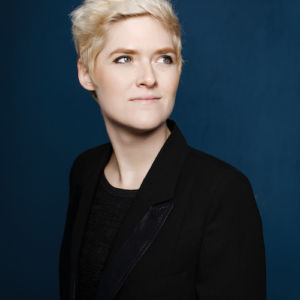
About Amber Case
Amber Case studies the interaction between humans and computers and how our relationship with information is changing the way cultures think, act, and understand their worlds. She is currently a fellow at Harvard University’s Berkman Klein Center for Internet and Society and a visiting researcher at the MIT Center for Civic Media.
Amber is the author of Calm Technology, Design for the Next Generation of Devices. She spoke about the future of the interface for SXSW 2012’s keynote address, and her TED talk, “We are all cyborgs now,” has been viewed over a million times. Named one of National Geographic’s Emerging Explorers, she’s been listed among Inc. Magazine’s 30 under 30 and featured among Fast Company’s Most Influential Women in Technology. She was the co-founder and former CEO of Geoloqi, a location-based software company acquired by Esri in 2012. In 2008, Amber also founded CyborgCamp, an unconference on the future of humans and computers.
Amber currently resides in Cambridge, Massachusetts and Portland, Oregon, so we're thrilled she's taking the time to come and join us at this years UX London
Designing Calm Technology
Our world is made of information that competes for our attention. What is needed? What is not? We cannot interact with our everyday life in the same way we interact with a desktop computer. The terms calm computing and calm technology were coined in 1995 by PARC Researchers Mark Weiser and John Seely Brown in reaction to the increasing complexities that information technologies were creating. Calm technology describes a state of technological maturity where a user’s primary task is not computing, but being human.
The idea behind Calm Technology is to have smarter people, not things. Technology shouldn’t require all of our attention, just some of it, and only when necessary. How can our devices take advantage of location, proximity and haptics to help improve our lives instead of get in the way? How can designers can make apps “ambient” while respecting privacy and security?
This talk will cover how to use principles of Calm Technology to design the next generation of connected devices. We’ll look at notification styles, compressing information into other senses, and designing for the least amount of cognitive overhead.
Designing Calm Technology
The difference between an annoying technology and one that is helpful is how it engages our attention. Calm Technology is a framework for designing ubiquitous devices that engage our attention in an appropriate manner. The aim of Calm Technology is to provide principles that follow the human lifestyle and environment in mind, allowing technology to amplify humanness instead of taking it away. This workshop will cover how to use principles of Calm Technology to design the next generation of connected devices. We’ll look at notification styles, compressing information into other senses, and designing for the least amount of cognitive overhead. Structure and activities Students will work in groups to solve a series of design challenges, including designing new products, ‘calming down’ a complex ones, communicating the principles of Calm Technology across an organization and team, and entering a product successfully into the marketplace. You’ll learn how to: Use principles of Calm Technology to design the next generation of connected devices. Design appropriate notification systems into both physical and software products Communicate the principles of Calm Technology to your across your organization and team Use methods of Calm Technology to design technology for generations, not seasons. Enter your product successfully into the marketplace. Who is the workshop for? This workshop is for anyone that actively builds or makes decisions about technology, especially user experience designers, product designers, managers, creative directors and developers. Attendees are encouraged to have some background in user experience design and look at http://calmtech.com/ or Designing Calm Technology before the workshop. Bringing a laptop is not required, as work will be done on paper and in groups.